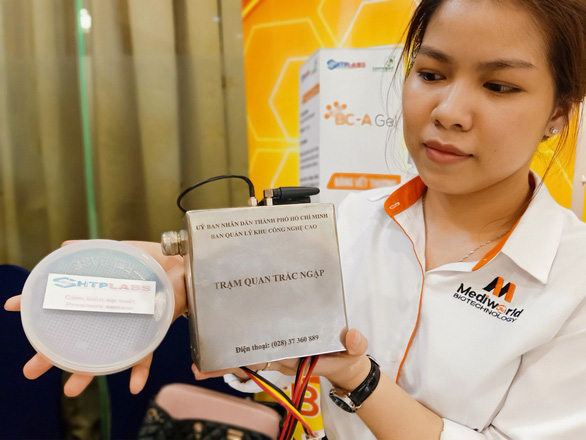Reseachers from the Saigon High-Tech Park’s labs and Australia’s Griffith University are developing a network of energy-efficient smart sensors to help Ho Chi Minh City curb urban flooding.
The network includes silicon carbide sensors that will work like the city’s ‘nervous system’ to provide real-time flood information and early warnings for citizens on mobile applications, the park’s management board said on Monday.
The Internet-linked sensory network is expected to improve safety for locals while assisting city authorities in managing and regulating traffic and thus reducing human and economic losses.
It is the essential first step to an automated response system for the prevention of local flooding in the city, using stormwater drainage infrastructure to capture, divert, or pump rainwater to less flooded areas.
“Australia is proud to support the development of practical technology solutions that help to improve Vietnam’s ability to respond to urban flooding,” said Australian Consul General in Ho Chi Minh City Julianne Cowley.
“As the system rolls out in Ho Chi Minh City, discussions on commercializing opportunities are underway so the technology can be applied in other Vietnamese cities as well.”
Australia’s Department of Foreign Affairs and Trade has granted AU$400,000 (US$292,500) to develop the network, Griffith University said on its website.
“Ho Chi Minh City, the largest city in Vietnam, faces weekly deluges of floodwater that severely impacts more than 60 percent of its citizens and causes severe economic loss every year,” said Associate Professor Dzung Dao, who leads the project to create the web of micro-sensors.
“The first step to overcoming the problem is developing a sensory system throughout the city that monitors water levels so as to find out exactly where and when it is flooding.”
Like us on Facebook or follow us on Twitter to get the latest news about Vietnam!



















































